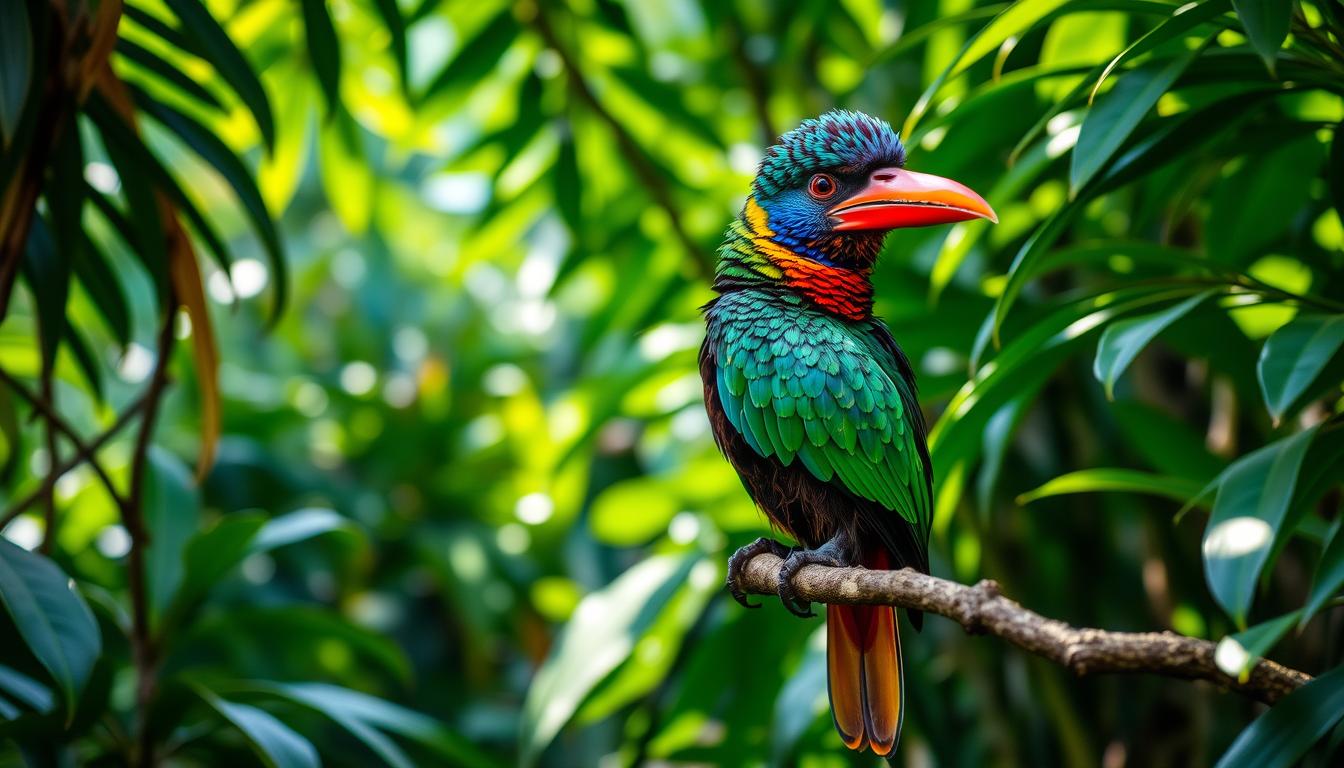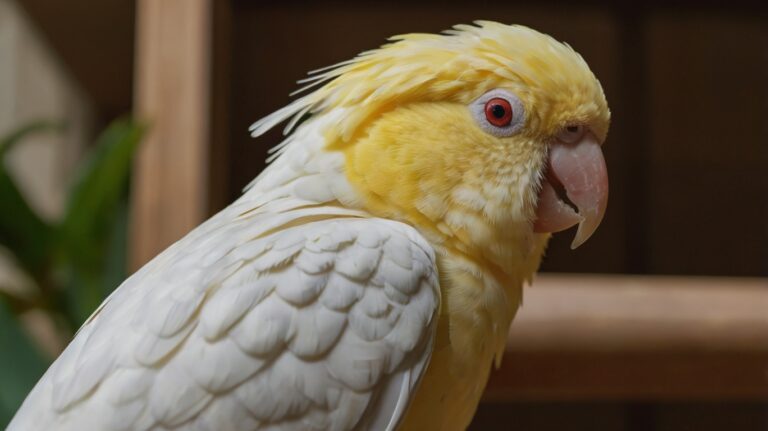Hancock Bird: Discover Nature’s Flying Marvel
As I step into the vibrant chaparral, I see the Hancock bird, also known as the greater roadrunner. This cuckoo species is native to the Southwestern United States and Mexico. It has long fascinated nature lovers with its amazing behaviors and stunning looks.
From its incredible adaptations to its key role in the ecosystem, the Hancock bird is a true marvel. It deserves our exploration and appreciation.
The Hancock bird is sure to captivate anyone who sees it. With a length of 20-25 cm and a weight of 100-150 grams, it’s a joy to watch. Its vibrant colors and elaborate plumage, especially during breeding season, make it stand out.
The Hancock bird’s story is one of resilience and adaptation. It thrives in various habitats, from chaparrals to deserts in the Southwestern United States. As we explore this iconic Southwestern bird, we’ll learn about its origins, role in the ecosystem, and conservation efforts. Join me as we discover the wonders of the Hancock bird, nature’s flying marvel.
Table of Contents
Unveiling the Elusive Hancock Bird
The Hancock bird has long fascinated birdwatchers and scientists. It was first seen in the late 1800s by Edward Hancock. For years, it was a mystery, with only a few sightings and photos.

In the 1970s, scientists finally studied it in depth. They learned about its special ways and how it lives in groups.
Origins and Discovery
The Hancock bird comes from the deep rainforests of South America. It lived there for centuries before scientists found out about it. Hancock’s discovery in the late 1800s sparked a lot of interest.
Physical Characteristics
The Hancock bird is truly amazing. It has striking plumage and is quite large. Its colorful feathers show off its beauty and adaptability.
Its sizeable wingspan and strong talons show it’s a powerful bird. These traits help it thrive in its home.
| Physical Trait | Description |
|---|---|
| Average Size | Wingspan of 5-6 feet, body length of 24-30 inches |
| Coloration | Vibrant hues of blue, green, orange, and red |
| Plumage | Intricate patterns and iridescent feathers |
| Beak and Talons | Strong, curved beak and sharp, powerful talons |
The Hancock Bird’s Vibrant Habitats
The Hancock bird is a stunning bird that lives in the green, lush rainforests. It can be found in many places, showing how well it adapts. From the Amazon to the Andes, it thrives in different areas, proving it can live in many places.
Geographic Distribution
The Hancock bird mostly lives in South America, especially in the Amazon. It also goes to North America and Europe, showing it can handle different climates. Its presence in these places shows how vital it is to keep these ecosystems balanced.
Niche Within Rainforest Ecosystems
In the rainforest, the Hancock bird is key to keeping things balanced. It lives in big groups, showing complex social structures. It helps spread seeds and controls bugs, making it crucial for the rainforest’s health.
| Habitat Characteristics | Hancock Bird Preferences |
|---|---|
| Vegetation Structure | Prefer primary, old-growth rainforests with a diverse, multilayered canopy |
| Climate | Thrive in consistent, year-round tropical climates with high rainfall |
| Elevation Range | Found from sea level up to around 1,500 meters in elevation |
| Human Disturbance | Prefer areas with minimal human activity and undisturbed environments |
| Food Resources | Abundant fruiting trees and diverse insect populations |
The Hancock bird’s habitats are vibrant and diverse, showing its importance in rainforests. By studying and protecting it, we can help it survive and keep its home balanced.
Behaviors and Social Structures
The Hancock bird is a true marvel of nature. It shows a captivating array of behaviors and social structures. These birds are known for their melodious songs and elaborate courtship displays. These displays are vital for their mating rituals and family dynamics.
Mating Rituals and Courtship Displays
During the breeding season, male Hancock birds showcase their impressive vocalizations. Their calls range from flute-like whistles to complex trills. They use these calls to establish territory, communicate with flock members, and court prospective partners.
The males engage in mesmerizing courtship displays. They include feather-ruffling, wing-flapping, and intricate dances. All these are aimed at impressing the females and securing a mate.
Family Dynamics and Parental Care
Hancock birds form strong pair bonds and exhibit monogamous mating behavior. Both the male and female play active roles in constructing their nests. They also incubate the eggs and care for their offspring.

The young Hancock birds receive attentive parental care. The adults feed and protect their chicks until they can fend for themselves. This dedication to family life shows the social intelligence and complex behaviors of these remarkable creatures.
Diet and Feeding Habits of the Hancock bird
The Hancock bird lives in the South American rainforests. It has a wide range of foods to eat to survive. These birds know how to find and eat the many foods in their home.
They love to eat fruits, especially soft, colorful berries from the trees. These fruits give them carbs and vitamins. They also eat insects like beetles and caterpillars for protein.
They have special beak adaptations to drink nectar from rainforest flowers. Sometimes, they even eat small vertebrates like lizards and tree frogs.
| Food Source | Frequency in Diet | Nutritional Benefits |
|---|---|---|
| Fruits and Berries | Primary | Carbohydrates, Vitamins |
| Insects | Secondary | Protein |
| Nectar | Occasional | Carbohydrates |
| Small Vertebrates | Rare | Protein |
The Hancock bird’s ability to eat many different foods is crucial. It helps keep the rainforest ecosystem balanced. By eating a variety of foods, these birds are essential to their environment.
How the Hancock Bird Impacts Ecosystems
The Hancock bird is key to the rainforest’s balance. These birds help the forest grow and stay diverse. They do this through their special way of eating.
Seed Dispersal and Pollination
Hancock birds spread seeds by eating fruits and then dropping the seeds elsewhere. This helps new plants grow, keeping the forest alive. It’s a big part of how the forest stays healthy.
They also help plants make more by pollinating them. When they visit flowers, they carry pollen, helping plants reproduce. This is vital for the forest’s health.
Maintaining Ecological Balance
Hancock birds keep insect numbers in check. They eat insects, keeping the forest’s food web balanced. This stops one species from being too dominant.
By spreading seeds and pollen, they help plants grow and diversify. This supports other animals that need plants to survive. It’s a big win for the whole ecosystem.
In short, Hancock birds are essential to the rainforest. They connect different parts of the ecosystem, keeping it strong and healthy.
Hancock bird: A Kaleidoscope of Colors and Patterns
The Hancock bird is a true visual marvel. Its plumage is a breathtaking display of nature’s artistry. It shows off vibrant colors like deep purples, bright oranges, electric blues, and emerald greens.
Intricate patterns adorn its feathers. These patterns create a mesmerizing visual tapestry. It reflects the richness of the rainforest ecosystem it calls home.
Plumage Variations and Sexual Dimorphism
One of the Hancock bird’s most striking features is its crest of elongated feathers. This adds to its already captivating appearance. The species also shows a remarkable degree of sexual dimorphism.
Males and females often have distinct plumage and color patterns. This diversity of colors and patterns helps attract mates. It also aids in camouflage and communication within the bird’s social structures.
The Hancock bird’s vibrant plumage is truly a sight to behold. It’s a testament to the incredible variety of life in rainforests. This magnificent species is a living work of art. It captivates the senses and ignites the imagination of all who see it.
Threats and Conservation Efforts
The Hancock bird’s future is at risk due to many threats. Habitat loss and fragmentation are the biggest concerns. As forests shrink, the bird’s home is disappearing, making survival hard.
Habitat Loss and Fragmentation
Human activities like farming and logging are cutting down forests. This reduces the Hancock bird’s space. It also breaks up its habitats, isolating birds and hurting their health.
Successful Initiatives and Future Strategies
- The Hancock Wildlife Foundation, started in 2006, leads in conservation. It uses the internet and live cameras to spread the word about the Hancock bird.
- The Foundation’s creative events, like the Fraser Valley Bald Eagle Festival, draw lots of people. They help more than just lectures can.
- Projects like the Tropical Research for Avian Conservation and Ecotoxicology (TRACE) study how mercury affects birds. They aim to protect these birds.
- Future plans include fixing habitats, creating protected areas, and using land wisely. These steps will help save the Hancock bird.
By combining research, community work, and conservation, we can help the Hancock bird. It will keep showing off its bright colors and lively actions for years to come.
The Hancock Bird in Culture and Ecotourism
The Hancock bird is deeply rooted in local cultures. It symbolizes freedom, beauty, and nature’s balance. It’s more than a bird; it’s a part of our shared heritage and environmental care.
The Hancock bird draws birdwatchers and ecotourists. The Hancock Wildlife Foundation (HWF) leads in promoting safe bird interactions. They use eagle cams, educational programs, and tours to teach us about the Hancock bird’s importance.
- HWF works to protect habitats, showing how crucial they are for the Hancock bird’s survival.
- HWF’s rehab programs help injured or orphaned Hancock birds, showing their commitment to these creatures.
- HWF’s live bird cams give us a peek into the Hancock bird’s life, changing how we learn about them.
- HWF’s educational efforts spark interest in Hancock bird conservation, reaching all ages with webinars and classroom materials.
The Hancock Wildlife Foundation is a global leader in Hancock bird conservation. They connect humans with nature, inspiring wonder and care for the Hancock bird. Their work ensures its cultural and ecological value for future generations.
“The Hancock bird is not just a natural wonder – it is a living embodiment of the delicate balance that binds us all to the land and the sky. By protecting its habitat and fostering a deeper understanding of its ways, we safeguard the very essence of our shared heritage.”
Conclusion
The Hancock bird is a wonder of evolution and a symbol of life’s diversity in rainforests. Its bright colors and songs show the beauty of tropical life. It’s not just a pretty sight; it plays a vital role in its ecosystem.
Learning about the Hancock bird makes us realize how fragile our world is. Threats like deforestation and climate change harm its home. We must act to save this bird and its rainforest.
Groups like the Hancock Wildlife Foundation are working hard to protect the bird. They study, restore habitats, and work with local people. Their work helps us understand and live with the Hancock bird responsibly.
By supporting these efforts, we can keep the Hancock bird’s magic alive. This way, it will continue to amaze and inspire future generations.







